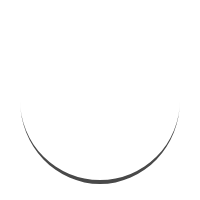Abstract
Background
The pleiotropic effects of riluzole may antagonize common mechanisms underlying chronic cerebellar ataxia, a debilitating and untreatable consequence of various diseases.Methods
In a randomized, double-blind, placebo-controlled pilot trial, 40 patients presenting with cerebellar ataxias of different etiologies were randomly assigned to riluzole (100 mg/day) or placebo for 8 weeks. The following outcome measures were compared: proportion of patients with a decrease of at least 5 points in the International Cooperative Ataxia Rating Scale (ICARS) total score after 4 and 8 weeks compared with the baseline score; mean changes from the baseline to posttreatment ICARS (total score and subscores at 8 weeks); and occurrence of adverse events.Results
Riluzole and placebo groups did not differ in baseline characteristics. The number of patients with a 5-point ICARS drop was significantly higher in the riluzole group than in the placebo group after 4 weeks (9/19 vs 1/19; odds ratio [OR] = 16.2; 95% confidence interval [CI ] 1.8-147.1) and 8 weeks (13/19 vs 1/19; OR = 39.0; 95% CI 4.2-364.2). The mean change in the riluzole group ICARS after treatment revealed a decrease (p < 0.001) in the total score (-7.05 [4.96] vs 0.16 [2.65]) and major subscores (-2.11 [2.75] vs 0.68 [1.94] for static function, -4.11 [2.96] vs 0.37 [2.0] for kinetic function, and -0.74 [0.81] vs 0.05 [0.40] for dysarthria). Sporadic, mild adverse events occurred.Conclusions
These findings indicate the potential effectiveness of riluzole as symptomatic therapy in diverse forms of cerebellar ataxia.Classification of evidence
This study provides Class I evidence that riluzole reduces, by at least 5 points, the ICARS score in patients with a wide range of disorders that cause cerebellar ataxia (risk difference 63.2%, 95% CI 33.5%-79.9%).Full text links
Read article at publisher's site: https://doi.org/10.1212/wnl.0b013e3181d31e23
Free to read at www.neurology.org
http://intl.neurology.org/cgi/content/abstract/74/10/839
Subscription required at www.neurology.org
http://intl.neurology.org/cgi/content/full/74/10/839
Citations & impact
Impact metrics
Citations of article over time

Article citations

Similar Articles
To arrive at the top five similar articles we use a word-weighted algorithm to compare words from the Title and Abstract of each citation.
Riluzole in patients with hereditary cerebellar ataxia: a randomised, double-blind, placebo-controlled trial.
Lancet Neurol, 14(10):985-991, 25 Aug 2015
Cited by: 99 articles | PMID: 26321318
Riluzole for amyotrophic lateral sclerosis (ALS)/motor neuron disease (MND).
Amyotroph Lateral Scler Other Motor Neuron Disord, 4(3):191-206, 01 Sep 2003
Cited by: 87 articles | PMID: 13129806
Review
Riluzole in Huntington's disease: a 3-year, randomized controlled study.
Ann Neurol, 62(3):262-272, 01 Sep 2007
Cited by: 93 articles | PMID: 17702031
Safety and efficacy of riluzole in spinocerebellar ataxia type 2 in France (ATRIL): a multicentre, randomised, double-blind, placebo-controlled trial.
Lancet Neurol, 21(3):225-233, 18 Jan 2022
Cited by: 14 articles | PMID: 35063116


